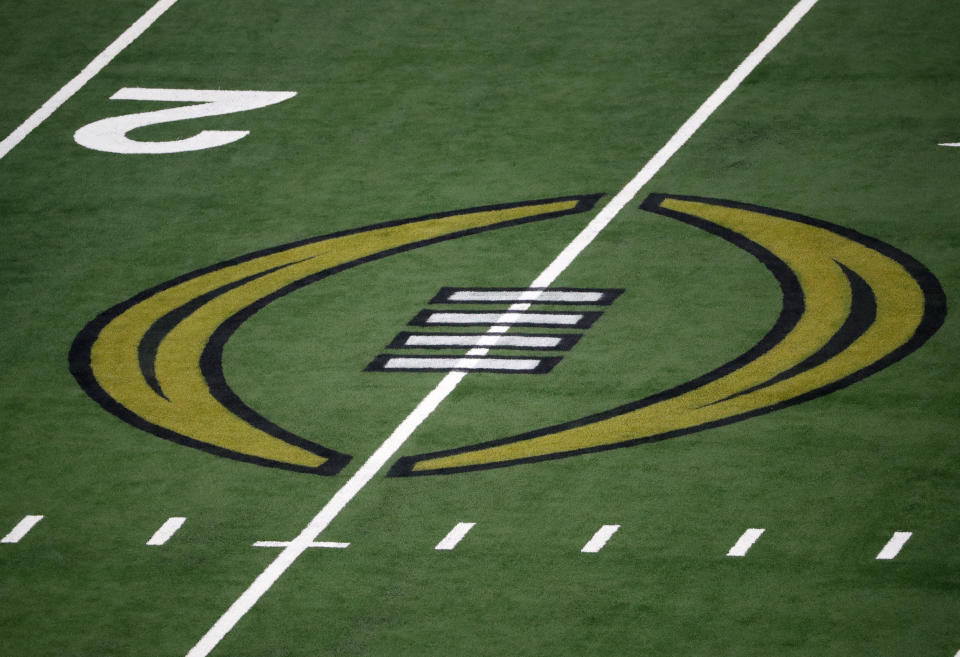As college football season heads toward inevitable collapse, which conference will go first?
The 2020 college football season is teetering on the brink, and throughout the sport the question isn’t so much if it will be canceled as opposed to who will do the canceling.
The prime contenders: the Big Ten and the Pac-12.
As of now the season is officially still on, at least mostly.
The Mid-American Conference pulled the plug on its season Saturday morning, affecting 12 schools. The University of Connecticut, an independent, had already done so individually on Wednesday.
What comes next will determine a lot. No offense to those 13 schools, but college football can go on without them. The sport is usually played by 130 schools in 43 states, coming in all shapes, sizes and finances. Almost no one ever thought 2020 would happen with all of them.
However, if there is no Ohio State or USC — let alone Clemson and Alabama — then forget it.
This Jenga tower of a sport is just waiting for the wrong block to be pulled from underneath it. All eyes are on two of the nation’s Power Five conferences — one in the Midwest, the other in the West — doing the tugging.
“I think if one league shuts down, then the others will follow like dominoes,” an SEC athletic director theorized this week.
It’s an ominous thought. Throughout the coronavirus pandemic, the balancing scales of optimism and pessimism have rocked gently back and forth. Throughout it all there was always hope, even if it was only loosely based on reality, that one or two or three leagues might be able to just go it alone.

And maybe they will. The Big 12 has appeared the most assertive in pushing forward. The SEC has always claimed “it just means more.” Then again, the virus isn’t going to bend to marketing slogans.
Nearly everyone in college athletics wants to have a season, and not just because not having one will bring financial ruin. (Penn State last week acknowledged losses could reach “nine figures in the case of no competition,” or $100 million.)
The bottom line is the bottom line.
If the season has to be shuttered, there is a hesitancy to be first, whether it’s for historical or recruiting reasons. It’s easier to let someone else take the blame. It’s one reason why everyone has tried to kick the can as far down the road as possible, delaying D-Day with shortened seasons and pushed-back openers.
Time ticks though.
The Big Ten on Saturday said it will not allow padded practices to begin. It wants further evaluation on the safety of conducting them. With the season openers in that league scheduled for Sept. 5, the decision may, at the very least, force a postponement of Week 1 games to late September.
“We understand there are many questions regarding how this impacts schedules, as well as the feasibility of proceeding forward with the season at all,” the Big Ten said in a statement. “As we have consistently stated, we will continue to evaluate daily, while relying on our medical experts, to make the best decisions possible for the health, safety and wellness of our student-athletes.”
Then there is the Pac-12, which has pushed its season opener back to Sept. 26, but has yet to begin training camps. The league has set Aug. 17 as the day teams can commence camps.
In California, however, home to four of the league’s 12 programs — Cal, Stanford, UCLA and USC — the local public health orders are not conducive to starting camps. The three counties where the schools reside (Los Angeles for UCLA and USC, Alameda for Cal and Santa Clara for Stanford) currently prohibit gatherings of over 50 people.
That means, effectively, no camp.
And if there is no camp by Aug. 17, can there be a season by Sept. 26? Even the 17th offers just five weeks to get into game shape before the first game week.
If not, then the Pac-12 is the Pac-8 (made up of schools in Arizona, Colorado, Oregon, Utah and Washington) or, more likely just not playing at all this fall. That would make Aug. 17 the potential drop-dead date of the league, and maybe the sport. And that’s if we even get that far.
“We would probably have to make a decision on the next phase (training camp) and on the season by (the 17th),” a Pac-12 administrative official told Yahoo Sports.
None of this is sneaking up on the Pac-12. It tried to buy time. It appears to be running out.
“One of the things we’ve always tried since Day 1, we’ve talked about giving ourselves as much flexibility as possible when the schedule was put out,” the administrator said. “It’s clear as day that we have a state struggling to manage COVID.”
Almost precisely five months ago (March 12), the NCAA called off the men’s and women’s basketball championships.
It was a shock, a seemingly impossible development.
Now here comes football.
It’s not over yet. It’s still possible that the big five leagues will push on. But from coaches to administrators, that isn’t what’s being discussed right now — it’s which league is going to make the first move and whether everyone will follow.
More from Yahoo Sports:
